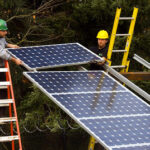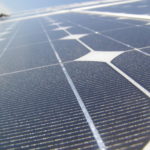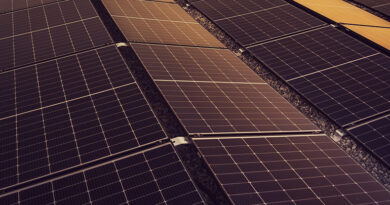US installs 5 GW of solar in three months, surpasses 100 GW of total installed capacity
The U.S. solar market surpassed 100 GWdc of installed electric generating capacity, doubling the size of the industry over the last three-and-a-half years, according to the U.S. Solar Market Insight Q2 2021 report, released today by the Solar Energy Industries Association (SEIA) and Wood Mackenzie.
Solar had a record-setting Q1 2021 and accounted for 58% of all new electric capacity additions in the United States. Renewable energy accounted for nearly 100% of all new electric capacity in Q1.
“It’s incredible to see the solar industry pass 100 GW after the policy and regulatory hurdles we’ve faced over the last few years,” said Abigail Ross Hopper, president and CEO of SEIA. “While we’re poised for more growth, we must accelerate solar and storage deployment to address the climate crisis and reach President Biden’s ambitious clean energy goals. Long-term policy certainty is the best way to do that, and we’re urging Congress to act this summer.”
The U.S. solar industry installed 5 GW of new capacity in Q1 2021, a new Q1 record and a 46% increase over Q1 2020. The utility-scale sector accounts for a majority of these installations, with a Q1 record of 3.6 GW. Residential solar sales continued to grow, with the sector adding 905 MW in Q1 2021, an 11% increase over the same period last year.
For the first time, the U.S. Solar Market Insight report breaks out commercial and community solar as separate market segments. The commercial sector grew by 19% from Q1 2020 and the community solar sector declined 15% from Q1 2020.
Texas led all states with 1.52 GW of new solar capacity in Q1, more than it added in all of 2019 and three times more than any other state. Indiana, Virginia, Michigan and Iowa were among the top 10 solar states this quarter.
According to forecasts from Wood Mackenzie, the solar Investment Tax Credit will continue to be influential and will drive record growth and investment over the next three years. The forecast calls for 160 GW of solar capacity to be installed from 2021 to 2026, bringing total installed photovoltaic solar capacity to more than 250 GW by the end of 2026.
The report also calls attention to rising costs in the solar industry and helps to explain the dynamics at play. While average solar system prices remained relatively stable from Q4 2020 to Q1 2021, key inputs for solar modules and installations, including polysilicon, steel, aluminum, semiconductor chips, copper and other metals, are facing supply constraints. Compounding cost increases across all materials started at the end of Q1 and are beginning to affect installers now.
“Demand for solar power continues to grow, but attention is now turning to supply chain constraints, which have heightened since the latter half of 2020,” said Michelle Davis, principal analyst and lead author of the report. “There is a lag between commodity prices and subsequent solar system prices. But there’s no doubt this is impacting the solar industry. Installers are managing current equipment shortages and having to decide whether to renegotiate contracts.”
The exact effects of supply chain constraints will continue to manifest over the coming quarters. Future reports will provide additional analysis on the changes happening in the solar industry.
News item from SEIA
<!–
–>
Original Source: https://www.solarpowerworldonline.com/2021/06/us-solar-industry-reaches-100-gw-of-total-installed-capacity/













